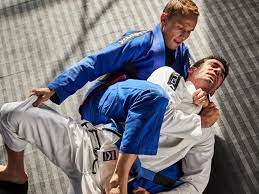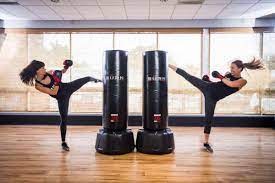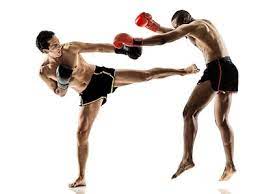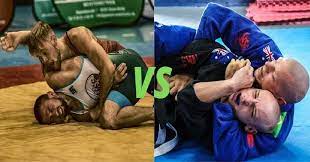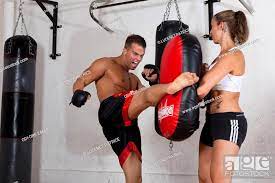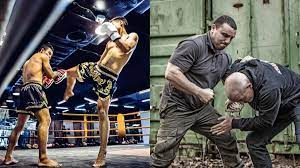Jiu Jitsu: The Art of Ground Fighting
Introduction
Jiu Jitsu, also spelled as Jujitsu or Ju Jitsu, is a martial art that emphasizes grappling and ground fighting. It utilizes leverage and technique to overcome opponents, regardless of their size or strength. Jiu Jitsu techniques involve joint locks, chokes, and immobilization holds to control and defeat an adversary.
History of Jiu Jitsu
Jiu Jitsu has its roots in ancient Japan, evolving from traditional Japanese martial arts. It was developed by samurais as a form of combat that could be employed when weapons were not available or practical to use. Over time, Jiu Jitsu branched out into different styles and gained recognition worldwide.
Principles and Techniques
The fundamental principles of Jiu Jitsu revolve around the concept of using an opponent’s strength and energy against them. Practitioners learn techniques such as throws, takedowns, and submissions to neutralize attacks and gain control. The art emphasizes the importance of leverage, timing, and positioning to overcome physical disadvantages.
Benefits of Jiu Jitsu
Jiu Jitsu offers a wide range of benefits, both physically and mentally. It provides a full-body workout that improves strength, flexibility, and cardiovascular endurance. Additionally, practicing Jiu Jitsu enhances self-confidence, discipline, focus, and problem-solving skills. It also promotes stress relief and overall well-being.
Jiu Jitsu Training
Training in Jiu Jitsu involves a combination of drills, sparring, and live rolling sessions. Beginners start by learning basic techniques and gradually progress to more advanced moves. Training sessions often include both gi (traditional uniform) and no-gi (without the uniform) training to adapt to different scenarios.
Famous Jiu Jitsu Practitioners
Jiu Jitsu has produced numerous legendary practitioners who have showcased the effectiveness of the art. Names like Helio Gracie, Carlos Gracie, Rickson Gracie, and Marcelo Garcia have become synonymous with Jiu Jitsu excellence. Their contributions have helped popularize the art and inspire generations of practitioners.
Jiu Jitsu Gear and Equipment
To practice Jiu Jitsu, certain gear and equipment are necessary. The most notable item is the Jiu Jitsu gi, which consists of a jacket and pants. Other essential equipment includes a belt, rashguard, mouthguard, and protective gear for specific training or competition purposes.
Jiu Jitsu Competitions
Competitions play a significant role in Jiu Jitsu, allowing practitioners to test their skills against opponents of similar abilities. Prominent tournaments, such as the International Brazilian Jiu-Jitsu Federation (IBJJF) World Championships, attract competitors from around the globe. These events showcase high-level techniques and provide a platform for recognition.
Jiu Jitsu Styles
Over time, Jiu Jitsu has branched out into various styles, each with its unique characteristics and approaches. Brazilian Jiu Jitsu (BJJ) is one of the most popular styles known for its focus on ground fighting and submissions. Other styles include Japanese Jiu Jitsu, Judo, and Sambo, each incorporating different techniques and strategies.
Jiu Jitsu for Self-Defense
Jiu Jitsu is highly regarded as an effective self-defense system. Its techniques empower individuals to defend themselves against larger and stronger attackers. By using leverage and proper technique, practitioners can neutralize threats without relying solely on physical strength. Jiu Jitsu provides the skills and confidence necessary to handle real-world confrontations.
Jiu Jitsu and Fitness
Beyond self-defense, Jiu Jitsu offers exceptional fitness benefits. The intense training sessions improve cardiovascular health, build functional strength, and enhance overall endurance. The dynamic nature of Jiu Jitsu keeps practitioners engaged and motivated, making it an enjoyable way to stay fit and healthy.
Jiu Jitsu for Kids
Jiu Jitsu is not limited to adults; it is also an excellent martial art for children. Kids who practice Jiu Jitsu develop discipline, respect, and self-control. The art teaches them valuable life lessons such as perseverance, problem-solving, and teamwork. Jiu Jitsu also instills a sense of self-confidence and improves their physical fitness.
Common Injuries in Jiu Jitsu
Like any physical activity, Jiu Jitsu carries the risk of injuries. Common injuries in Jiu Jitsu include sprains, strains, joint dislocations, and minor bruises. However, with proper training techniques, warm-up exercises, and adequate rest, the risk of injury can be minimized significantly.
Conclusion
Jiu Jitsu is a dynamic martial art that provides practitioners with effective self-defense skills, improved fitness, and numerous other benefits. Whether it’s for self-defense, competition, or personal development, Jiu Jitsu offers a well-rounded experience for individuals of all ages and backgrounds. Embracing Jiu Jitsu can lead to a transformative journey both on and off the mats.

